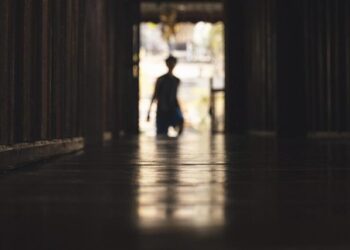An Indian man living in Ireland has spoken out after being targeted by a group of teenagers in a racially motivated attack. The victim, reflecting on the incident, expressed the frustration and pain experienced by many who face prejudice based on their skin color, saying, “I didn’t decide to be born brown.” This disturbing event highlights ongoing challenges related to racism and discrimination in Irish communities, sparking conversations about the need for greater awareness and inclusivity.
Challenges Faced by Indian Immigrants in Ireland Spotlighted by Recent Hate Incident
Indian immigrants in Ireland continue to grapple with systemic obstacles that extend beyond cultural assimilation and economic integration. Incidents of racial discrimination and hate crimes, such as the recent attack on an Indian man by a group of teens, expose the vulnerable reality for many in the community. These challenges range from subtle biases in workplaces and schools to outright verbal and physical abuse in public spaces. Fear and marginalization have become common experiences, often leaving victims hesitant to report such grievances due to concerns over retaliation or indifference.
The difficulties faced by Indian immigrants are compounded by social isolation and limited access to adequate support networks. Despite Ireland’s progressive immigration policies, the gaps in addressing racial intolerance remain evident. Below is a summary of some key challenges identified within the community:
- Racial Profiling: Frequent targeting based on skin color, leading to harassment.
- Economic Barriers: Difficulty securing jobs aligned with their qualifications, resulting in underemployment.
- Social Exclusion: Limited opportunities for cultural exchange or community engagement.
- Lack of Reporting Support: Few accessible channels for victims to safely report racial incidents.
| Issue | Impact | Community Response |
|---|---|---|
| Hate Crimes | Heightened fear, trauma | Support groups, legal aid |
| Workplace Discrimination | Job dissatisfaction, economic insecurity | Advocacy for equal rights |
| Social Isolation | Mental health issues | Cultural festivals, peer networks |
Examining the Rise of Racism Among Youth in Irish Communities and Its Impact
The recent incident involving an Indian man targeted by teenagers in Ireland has cast a harsh spotlight on a troubling trend: the resurgence of racism among youth in some Irish communities. Witnesses describe the attackers as driven by ignorance and fear, lashing out simply because of the man’s skin color-a vivid reminder that racial prejudice, once thought to be diminishing, is reemerging in new and unsettling ways. This shift challenges the longstanding narrative of Ireland as a welcoming society, revealing cracks that demand urgent attention from educators, policymakers, and community leaders alike.
Key factors contributing to this rise include:
- Lack of diversity education in schools
- Social media influence amplifying divisive rhetoric
- Economic anxieties fueling scapegoating
- Insufficient community engagement programs
The psychological and social impact on victims is profound, resulting in feelings of alienation, fear, and diminished sense of belonging. These experiences not only affect individuals but ripples through entire communities, undermining cohesion and fostering environments where mistrust can thrive. Experts emphasize that without comprehensive intervention, this trend risks entrenching division at a critical moment when Ireland is becoming increasingly multicultural.
| Impact | Description | Community Response |
|---|---|---|
| Emotional Trauma | Victims experience anxiety, depression | Counseling and support groups |
| Social Isolation | Withdrawal from public spaces | Community outreach programs |
| Increased Tensions | Heightened mistrust among communities | Intercultural dialogue initiatives |
Strategies for Combating Racial Abuse and Promoting Inclusivity in Schools and Public Spaces
Tackling racial abuse in schools and public spaces requires a multifaceted approach that actively involves communities, educators, and policymakers. Implementing comprehensive diversity training programs for staff and students is crucial in fostering empathy and understanding across cultural divides. These programs should include interactive workshops, open dialogues, and real-life scenario training to empower everyone to recognize and challenge racism when it occurs. Additionally, establishing safe reporting mechanisms ensures victims feel supported and perpetrators are held accountable, breaking the cycle of silence often surrounding racial incidents.
Promoting inclusivity also depends on systemic changes that embed equity into daily practices. Schools and public spaces must incorporate inclusive curricula that reflect the histories and contributions of all ethnic groups, normalizing diversity as part of the shared cultural fabric. Furthermore, community-driven initiatives, such as cultural festivals and mentorship programs, can build bridges and celebrate multicultural identities. The following table outlines key strategies with their expected outcomes, providing a practical roadmap for stakeholders aiming to create safer and more inclusive environments:
| Strategy | Description | Expected Outcome | ||||||||||
|---|---|---|---|---|---|---|---|---|---|---|---|---|
| Diversity Training | Engaging workshops for students and staff | Increased cultural empathy and awareness | ||||||||||
| Safe Reporting Systems | Anonymous and accessible channels for complaints | Higher reporting rates and accountability | ||||||||||
| Inclusive Curriculum | Integrating diverse histories and perspectives |
| Strategy | Description | Expected Outcome |
|---|---|---|
| Diversity Training | Engaging workshops for students and staff | Increased cultural empathy and awareness |
| Safe Reporting Systems | Anonymous and accessible channels for complaints | Higher reporting rates and accountability |
| Inclusive Curriculum | Integrating diverse histories and perspectivesTo Conclude The disturbing incident involving the Indian man targeted by teenagers in Ireland underscores ongoing challenges related to racial abuse and discrimination. As communities and authorities respond, it remains imperative to foster awareness, promote inclusion, and ensure justice for victims of such hate-driven attacks. Continued dialogue and proactive measures are essential to combat racism and build a safer, more accepting society for all. ADVERTISEMENT |
















